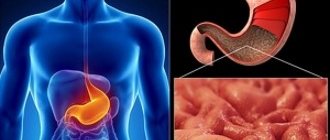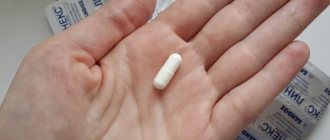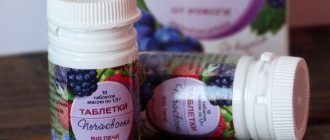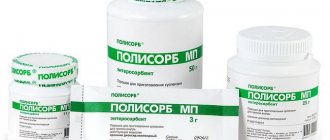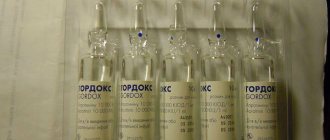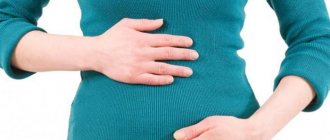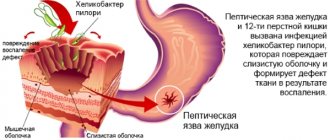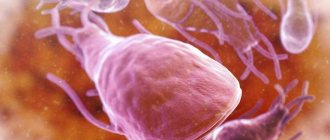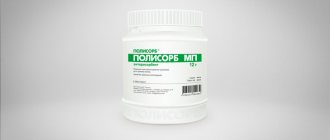An important role in the successful treatment of dermatoses is played by reducing the severity of external manifestations of the disease. These include:
- redness of the skin;
- rashes;
- skin itching;
- peeling;
- various inflammations.
The use of external preparations allows us to reduce them to a minimum. But it is not enough to act only on external signs. It is also necessary to combat the causes of their appearance, namely, fungal and bacterial infections. Treatment of skin diseases requires an integrated approach, and in this regard, one of the most preferred products is Akriderm GK cream. It has a unique combined composition, thanks to which it has 4 different effects on the skin problem, and also fights the causes of its occurrence. Let's take a closer look at what the drug "Akriderm GK" (cream) is used for and how to use it.
Composition of the drug
The uniqueness of the drug lies in three active substances:
- Betamethasone dipropionate. It penetrates deeply into the site of inflammation, has high hydrophobicity, provides a rapid therapeutic effect and long-lasting action. One tube of cream contains 0.064 g of betamethasone dipropionate.
- Gentamicine. This substance is a broad-spectrum antibiotic from the aminoglycoside group. Provides a bactericidal effect against many gram-positive and gram-negative microorganisms. Akriderm GK cream contains 0.1 g of gentamicin sulfate.
- Clotrimazole. It has a pronounced antifungal effect. The drug contains 1 g of clotrimazole.
Thanks to the combined composition, the drug not only relieves itching, redness and inflammation, but also helps eliminate pathogenic microorganisms. The active substances present in the cream complement and enhance each other’s actions, which will allow for more successful treatment of both subjective and objective symptoms of the disease.
Due to the higher concentration of water, the product is absorbed faster and is suitable for wet and thin areas of the skin. Also suitable for use on lesions localized in large folds of the skin.
In addition to purified water, the auxiliary components of the Akriderm GK preparation are:
- petrolatum;
- propylene glycol;
- liquid paraffin;
- cetostearyl alcohol;
- macrogol cetostearate;
- disodium edetate;
- sodium dihydrogen phosphate dihydrate.
pharmachologic effect
The drug "Akriderm GK" has a versatile effect:
- anti-inflammatory;
- antiallergic;
- antibacterial;
- antifungal (fungicidal).
This effect was achieved largely thanks to betamethasone. This component is a glucocorticosteroid and has a local anti-inflammatory, anti-edematous, anti-allergic effect.
In turn, gentamicin has a bactericidal effect. It even suppresses microorganisms that are resistant to other antibiotics.
The main function of clotrimazole is to prevent the activation of fungal flora against the background of the action of gentamicin. This component is an antifungal agent from the group of imidazole derivatives for topical use. It has an effect by disrupting the synthesis of ergosterol, which is an integral part of the cell membrane of fungi. Clotrimazole is also active against pathogenic dermatophytes, yeast and mold fungi.
Indications for use
During the use of Akriderm GK cream, a positive therapeutic effect is observed in relation to acute and subacute conditions. The drug has average penetrating ability and has a softening and cooling effect on the source of inflammation. Also used to combat diseases such as:
- simple and allergic dermatitis, especially complicated by secondary infection;
- diffuse neurodermatitis, including atopic dermatitis;
- limited neurodermatitis, including simple chronic lichen;
- eczema;
- dermatomycosis (dermatophytosis, candidiasis, lichen versicolor), especially when localized in the groin area.
The unique composition places the drug "Akriderm GK" in the most popular group of products that provide significant improvement after use.
Analogs
Pharmacy chains sell many structural analogues of Macrogol, which contain the same active ingredient:
- Lavacol;
- Realaxan;
- Transipeg;
- Forlax;
- Fortrans;
- Osmogol.
Unlike Macrogol, they add flavorings and sweeteners, which make taking laxatives more pleasant.
However, such additives in most cases affect the cost of drugs, making them inaccessible to some segments of the population.
Video on the topic: Examination of the large intestine
Contraindications
When using the product, you must be careful and follow the instructions and recommendations of a specialist. Before starting treatment, you must consult with him. It will help determine the appropriateness of using the product, as well as identify the presence of contraindications. These include:
- hypersensitivity to any of the components of the drug;
- lupus;
- skin manifestations of syphilis;
- chicken pox;
- herpes simplex;
- skin post-vaccination reactions;
- open wounds;
- children's age (up to 2 years).
If at least one of the above conditions is present, preference should be given to another drug.
There are also a number of conditions for which Akriderm GK can be used, but some precautions must be taken when using it. Pregnant women are allowed local treatment, but only in cases where the expected benefit to the mother outweighs the potential risk to the fetus. In such cases, treatment should be short-term and limited to small areas of the skin.
It is not known whether the components of the drug are excreted in breast milk. Therefore, when prescribing Akriderm GK during lactation, it is recommended to stop breastfeeding.
Directions for use and dosage
The instructions for the drug provide a standard dosage and application regimen. The drug is used externally; it must be applied carefully, lightly rubbing a small amount of the product into the affected areas of the skin. Apply 2 times a day, usually in the morning and evening. The duration of treatment is determined individually and depends on the nosological form and severity of the disease. For tinea pedis, the average duration of treatment is 2 to 4 weeks.
If clinical improvement does not occur in the near future, it is necessary to clarify the diagnosis or change the treatment regimen.
Macrogol
Macrogol
(lat.
Macrogol
) - a laxative drug.
Another common name is macrogol
. From a chemistry perspective, the names “macrogol” and “polyethylene glycol” are synonyms. Polyethylene glycol, a polymer of ethylene glycol, is a high molecular weight substance that is a long linear polymer with the empirical formula C2nH4n+2On+1. Polyhydric alcohol. A number is sometimes added to the name of this polymer indicating its molecular weight. Thus, macrogol-4000, widespread in medicine, has a molecular weight of 4000.
Macrogol is the international nonproprietary name (INN) of the drug. According to the pharmacological index, macrogol belongs to the group “Laxatives”. According to ATC, it belongs to the group “Osmotic laxatives” and has code A06AD15. Macrogol forms hydrogen bonds with water molecules in the intestinal lumen, increases the fluid content in the chyme, stimulates mechanoreceptors, and improves intestinal motility. Macrogol increases the volume of chyme and prevents the loss of electrolytes in feces. As a result, the evacuation reflex is restored and defecation is normalized. Macrogol is not absorbed, not metabolized, and does not change the acidity of chyme.
Indications for use of macrolog
- symptomatic treatment of constipation in adults
- for bowel cleansing before colonoscopy, x-ray examinations or surgery
Method of administration of macrogol and dose
Macrogol is taken orally in a dose of 10-20 g once a day, in the morning, before or during meals.
Before use, dissolve the powder at the rate of 10 g per glass of water. The effect of macrogol begins a day or two after taking the drug. Unlike most laxative drugs, when taking laxatives with an osmotic effect: macrogol and lactulose, there is no irritation of the chemoreceptors of the mucous membrane and no damage to it, even with prolonged use of the drugs. The high effectiveness of macrogol and lactulose and the absence of serious adverse reactions make these drugs the most preferred laxatives,
used in the treatment of chronic constipation. Several randomized placebo-controlled studies have shown that macrogol is practically free of toxic and side effects and is highly effective in the treatment of constipation (Roitberg G.E., Strutynsky A.V. Internal diseases. Digestive system. M.: MEDpress- inform, 2007).
Osmotic laxatives based on macrogol and lactulose are considered second-line drugs for the treatment of constipation of any type. Macrogol and lactulose are recommended when non-medicinal methods and dietary fiber are ineffective (Shulpekova Yu.O.).
In the treatment of chronic constipation in elderly and senile patients, lactitol has higher clinical efficacy, fewer side effects and a faster response to therapy compared to macrogol. This is due to the more pronounced effect of the latter on the motor activity of the colon, which is confirmed by electrogastroenterography data, as well as the normalization of the disturbed intestinal ecosystem, which was expressed by more significant changes in the concentration and qualitative composition of short-chain fatty acids, which are metabolites of the obligate microflora of the colon (Minushkin O.N. . and etc.).
The use of macrogol before colonoscopy, X-ray examinations and surgical interventions on the intestine
Macrogol 4000, due to its high molecular weight, is not absorbed from the gastrointestinal tract and is not metabolized, prevents the absorption of water from the stomach and intestines and promotes accelerated evacuation of intestinal contents.
The use of a solution with macrogol 4000 is much more effective than using the standard method: the descending colon, sigmoid and rectum are cleansed significantly better. Examination of the mucous membrane of the entire colon using macrogol 4000 was possible in 75% of patients, and with preparation using the standard method only in 20%. The average time required for a physician to examine the bowel was 24 minutes when using macrogol 4000 solution, and 35 minutes when preparing using the standard method. Although patients generally tolerated Macrogol 4000 well, the salty taste of the solution caused some to limit their fluid intake. To eliminate this drawback, the drug Fortrans was developed, the active ingredient of which is also macrogol. One sachet of Fortrans (containing 64 g of macrogol) is dissolved in 1 liter of water. The dose of the drug is set at the rate of 1 liter of solution per 15–20 kg of the patient’s body weight. The solution is taken 200 ml every 20 minutes in the evening before the procedure. Or 2 liters in the afternoon the day before and 1 liter in the morning on the day of the study. To prepare patients with severe heart failure and erosive and ulcerative lesions of the intestines, for whom the intake of such volumes of liquid is unacceptable, Forlax is used, containing in one sachet 10 g of macrogol 4000, which is dissolved in 250 ml of water and taken either 2 sachets per day in the morning at meal times during the three days preceding the procedure, or 2 sachets in the morning and evening. During this time, the proximal parts of the intestine are gradually released. To cleanse the distal sections, one small cleansing enema is given in the morning on the day of the study (Golysheva S.V., Grigorieva G.A. Macrogol preparations in preparing patients for colonoscopy and surgical interventions. Diseases of the digestive organs No. 2, 2004). See also the article: “Preparation of the colon for instrumental studies.”
Professional medical publications addressing the effects of macrogol (polyethylene glycol) on the gastrointestinal tract and its use in clinical practice
- Matsukatova B.O., Erdes S.I. Experience with the use of osmotic laxatives in the treatment of constipation in children // Questions of Dietetics. 2015. T. 5. No. 2. pp. 5–20.
- Erdes S.I., Matsukatova B.O., Revyakina S.A., Kasanave E.V. The effectiveness of osmotic laxative polyethylene glycol 4000 in the treatment of constipation in children // RZHGGK. - 2011. - T.21. — No. 6. — P.23-32.
- Samedov B.Kh. Recommendations for the use of espumizan during endoscopic examinations of the gastrointestinal tract and transendoscopic manipulations // North-West Bulletin of Endoscopy. – 2003.
- Pasechnikov V.D. Functional constipation caused by slow transit of intestinal contents // Farmateka. – 2003. – No. 10. – p. 16–23.
- Minushkin O.N., Ardatskaya M.D., Voskoboynikova I.V., Kolkhir V.K. Analysis of the clinical effectiveness of the drugs Exportal and Forlax // RZHGGK. - 2010. - T.20. - No. 5. - Adj. No. 36. — P.118.
- Shulpekova Yu.O. Constipation and methods of its treatment // Breast cancer. Diseases of the digestive system. – 2006. – Volume 8. – No. 2. – pp. 90–96.
- Description of the drug for patients (UK, pdf): “Macrogol Grapefruit Flavor, 10 g powder for oral solution. Macrogol Lemon Flavor, 10 g powder for oral solution. Package Leafleat. Information for the User"
On the website gastroscan.ru in the literature catalog there is a section “Laxatives”, containing medical articles relating to laxatives and their use.
Contraindications to the use of macrogol
- inflammatory diseases and ulcerative lesions of the colon mucosa, ulcerative colitis, Crohn's disease
- partial or complete intestinal obstruction
- abdominal pain of unknown origin
- hypersensitivity to polyethylene glycol
Long-term use of macrogol is not recommended without consulting a doctor.
Macrogol during pregnancy and breastfeeding.
Macrogol can be prescribed during pregnancy and breastfeeding.
Macrogol overdose
Due to the lack of systemic absorption, overdose is unlikely.
Interaction of macrolog with other drugs
The absorption of drugs taken simultaneously with macrogol may slow down, so macrogol is taken no earlier than 2 hours after taking other drugs.
Brand names of drugs containing macrogol
Medicines with the only active substance macrogol:
Lavacol, Osmogol, Realaxan, Tranzipeg, Forlax, Forteza Rompharm, Fortrans.
Macrogol in combination with other active ingredients:
- macrogol + potassium iodide + sodium chloride, brand Polyoxidin (belongs to the ATC group B05AA “Plasma replacement drugs and plasma protein fractions”)
- macrogol + sodium chloride + sodium bicarbonate, potassium chloride, trademark Endofalk (ATC code A06AD65 “Macrogol in combination with other drugs”)
Macrogol
is also used
in the pharmaceutical industry
in the production of various drugs as an excipient (the most commonly used is Macrogol 6000). For example, it is found in the enteric and film-coated preparations Ganaton, Bifiform, Festal, Omez, Sanpraz, Lanzoptol, Itomed, Emanera, Livodex, Festal N, Razo, in Gaviscon, De-Nol tablets, as well as in the vitamin and mineral complexes Complivit and others.
By order of the Government of the Russian Federation of December 30, 2009 No. 2135-r, macrogol (powder for the preparation of solution for oral administration) is included in the List of vital and essential medicines.
Macrogol has contraindications, application features and side effects. Before using macrogol, you should consult your doctor.
. Back to section
Side effects
Since Akriderm GK is a potent drug, some side effects may occur. Among them:
- itching;
- burning;
- irritation;
- dry skin;
- folliculitis;
- hypertrichosis;
- steroid acne;
- hypopigmentation;
- allergic reactions.
The severity of side effects depends on how the drug is used, as well as on the duration of treatment. Use together with occlusive dressings can lead to flickering of the skin, infection, skin atrophy, stretch marks, and prickly heat. With prolonged application of the product over large areas, the following side effects are possible:
- weight gain;
- osteoporosis;
- increased blood pressure;
- swelling;
- ulceration of the mucous membrane of the gastrointestinal tract;
- exacerbation of hidden foci of infection;
- hyperglycemia;
- nervous excitement;
- insomnia;
- dysmenorrhea.
Price
The cost of Macrogol depends on which pharmacy chain sells the medicine.
On average, the minimum and maximum prices for a package of 4 bags may differ by 90-100 rubles in Russia and 50-65 hryvnia in Ukraine.
Average price in Russia
The average price of Macrogol in Russia is about 280 rubles per pack of 10 sachets.
Average price in Ukraine
In Ukraine, the laxative Macrogol can be purchased for 178-190 hryvnia per package containing 12 packets of the drug.
Benefits of Akriderm GK cream
First of all, it is worth noting the affordable price of the drug. "Akriderm GK" is available in packages of 15 g and 30 g. The price of a 30 g tube is more favorable for the buyer compared to 15 g of another product against skin problems. The drug also has over-the-counter status and is available to a wide range of consumers.
But the main advantage of Akriderm GK lies in its versatile action. It deals a powerful blow to the source of inflammation, affecting not only the external manifestations of the disease, but also its causes. Many patients have reported a significant reduction in itching, redness and swelling after application.
Principle of application depending on the expected effect
A one-time use of the drug leads to a basic cleansing of the body, without showing the full effect of its influence, which consists of consistent muscle stimulation of the intestinal walls when used regularly for a short time.
In addition, by deeply cleansing the body of old deposits on the inner surface and not allowing toxic elements to diffuse into the bloodstream, Macrogol has a powerful positive effect on the body as a whole. Which is manifested by the following signs:
- Activation of metabolic processes.
- Cleansing the surface of the skin.
- Stabilization of the digestive process.
- Improving general well-being.
- Increasing the activity of the whole body.
